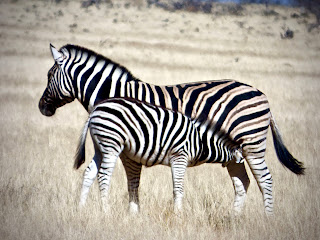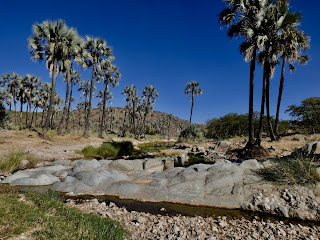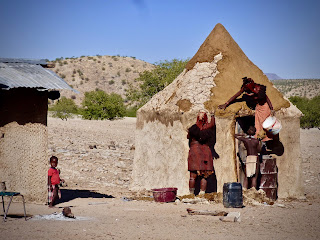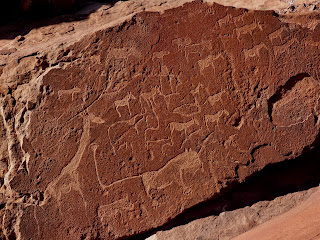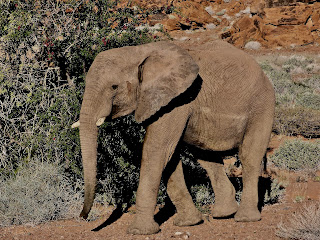June 18-21
This was my third African safari in six years and the more often I visit, the more I want to return; I can't seem to get enough of this continent. The natural wonders I have seen, the warmth of the people I have met, the history and cultures I have learned about, and the animals...I certainly can't seem to get enough of them.
The Etosha Pan lies on the northwestern edge of the Namibian Kalahari; Etosha means Great White Place of Dry Water and the pan is within the heart of a national park considered among the great parks of Africa. Open country fills most of the park fringed with expanses of grasses and further out is a tree and shrub savannah and woodland with lots of mopane trees. The changing seasons bring migrations of different animals...animals must eat and drink and search the availability of grass and water. And then there are the cats and the kills they must make to survive. To hear the shrieks of an impala being ravaged is a sound that I never liked to hear, but it is nature the way all was intended.
My Namibian journey was with one jeep, five other inveterate travelers that I didn't know beforehand, and one intrepid leader. Together we traveled through this remarkable country and had an unforgettable time together....we became comrades in search of adventure and discovery...and also drank marvelous wine at dinner and ate packed bag lunches in the shade of a tree along the road.
An African safari is, without a doubt, unlike any other travel experience...I will end my postings with the animals for they tell the story much better than I can.







